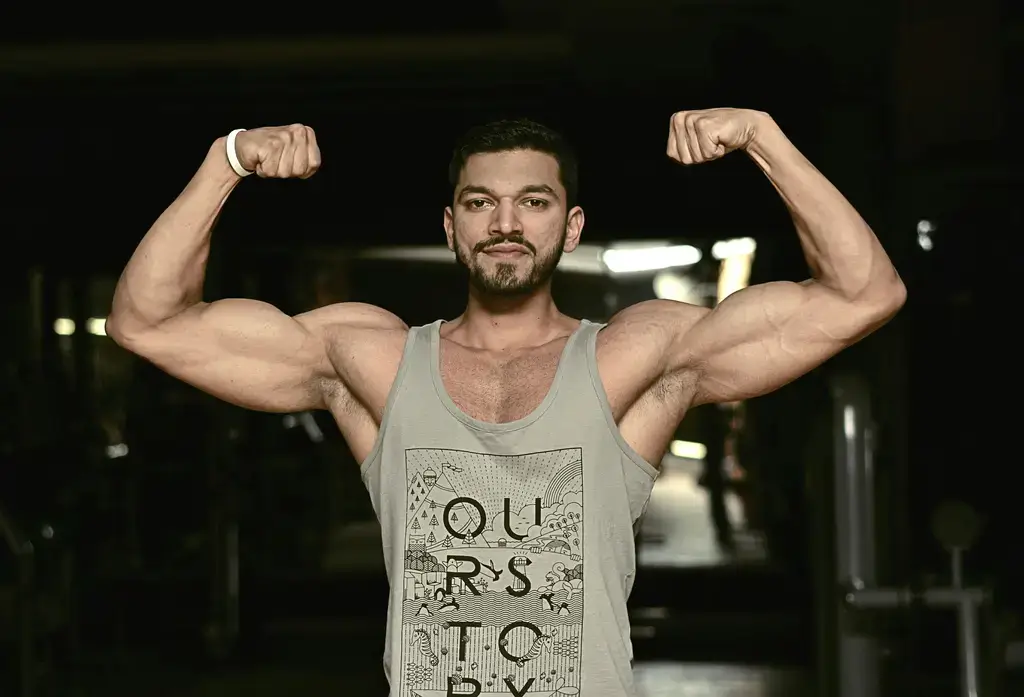Physical Address
304 North Cardinal St.
Dorchester Center, MA 02124
Physical Address
304 North Cardinal St.
Dorchester Center, MA 02124

Many people train hard primarily for a better physical appearance, despite knowing the health benefits of exercise. This is fine, but training must focus on the harmonious development of the entire body, not just “beach muscles.” An unbalanced approach often leads to muscle imbalances and injuries. Large biceps motivate many people to join a gym. Yet, biceps often fail to grow at the desired rate, even with countless repetitions. We now present potential reasons why your biceps look different than you want them to.
Heavy weights and high repetitions won’t help if your technique is wrong. Factors like starting stance, exercise execution, and range of motion all influence correct movement. If your technique is incorrect, other muscles may activate. These muscles will take over as the primary movers, preventing your biceps from fully engaging. The biceps is simple to activate, but almost all targeted exercises involve some form of curl variation. Therefore, proper technique is extremely important.
Ego challenges us all. In bicep curls, “more” isn’t always “better.” You can certainly lift heavy weight. However, consider which muscles perform the movements: Is it still your biceps? Heavy weight often activates other muscles. These secondary muscles steal activation from the biceps, reducing its growth potential. Every muscle has a limit to the load it can lift without recruiting help. Use lighter weights to ensure only the biceps works. Ten bad repetitions with 50 kg offer little benefit. Biceps are a small muscle group and already work during multi-joint upper body lifts. Therefore, only a few sets of isolation exercises are enough for an effective bicep workout.
Muscles adapt quickly. They soon get used to a specific movement type, so you must occasionally change how you perform the exercise. Variability can be tough to achieve when the elbow joint limits your movement to forearm flexion. Many different bicep curl variants exist: classic, hammer, concentration, Zottman, and more. All curls still move the elbow joint, so you must change other training parameters. Beyond changing classic sets and repetitions, try replacing dumbbells with a bar. Change your grip width on the bar. Change your body position during the exercise, or use a cable machine for a few cycles. Remember this: focusing only on the biceps won’t create a large, harmonious upper arm. You should give equal attention to the triceps.
No muscle grows if you train it daily. Adequate rest is the key to muscle growth. Training causes muscle fibers to tear. The fibers then rebuild and grow during the recovery period. Exercising a muscle group too frequently, without enough time for recovery, stops progress. This particularly affects smaller muscles like the biceps. Biceps cannot withstand the same stress level as larger muscle groups. Dedicate only one or two training days in your cycle to training biceps.
We know the biceps assists in many multi-joint upper body exercises. It receives a significant growth stimulus through these compound movements. Adding too many isolation exercises often achieves the opposite effect. Since the biceps is a small muscle, it cannot withstand the heavy load that large muscle groups can handle. Excessive isolation work will leave it fatigued and depleted. Your current training program presents another potential problem that causes muscle fatigue. If your program features back-to-back exercises where the biceps participates, you might be working your biceps too often weekly. The biceps will be tired and weak to receive stimulation during much of that time because it lacked adequate rest. We can help you recognize the signs of overtraining.
Nutrition is vital for muscle growth, alongside quality training and recovery. If your training program is structured well, the problem may lie elsewhere. A healthy routine requires enough sleep and a diet that supports your specific goals. If either of these elements is missing, they could be the reason for your poor results. We may want to target fat loss or muscle gain specifically, but the body functions proportionally as a whole system. If you want big arms, you must build size overall.